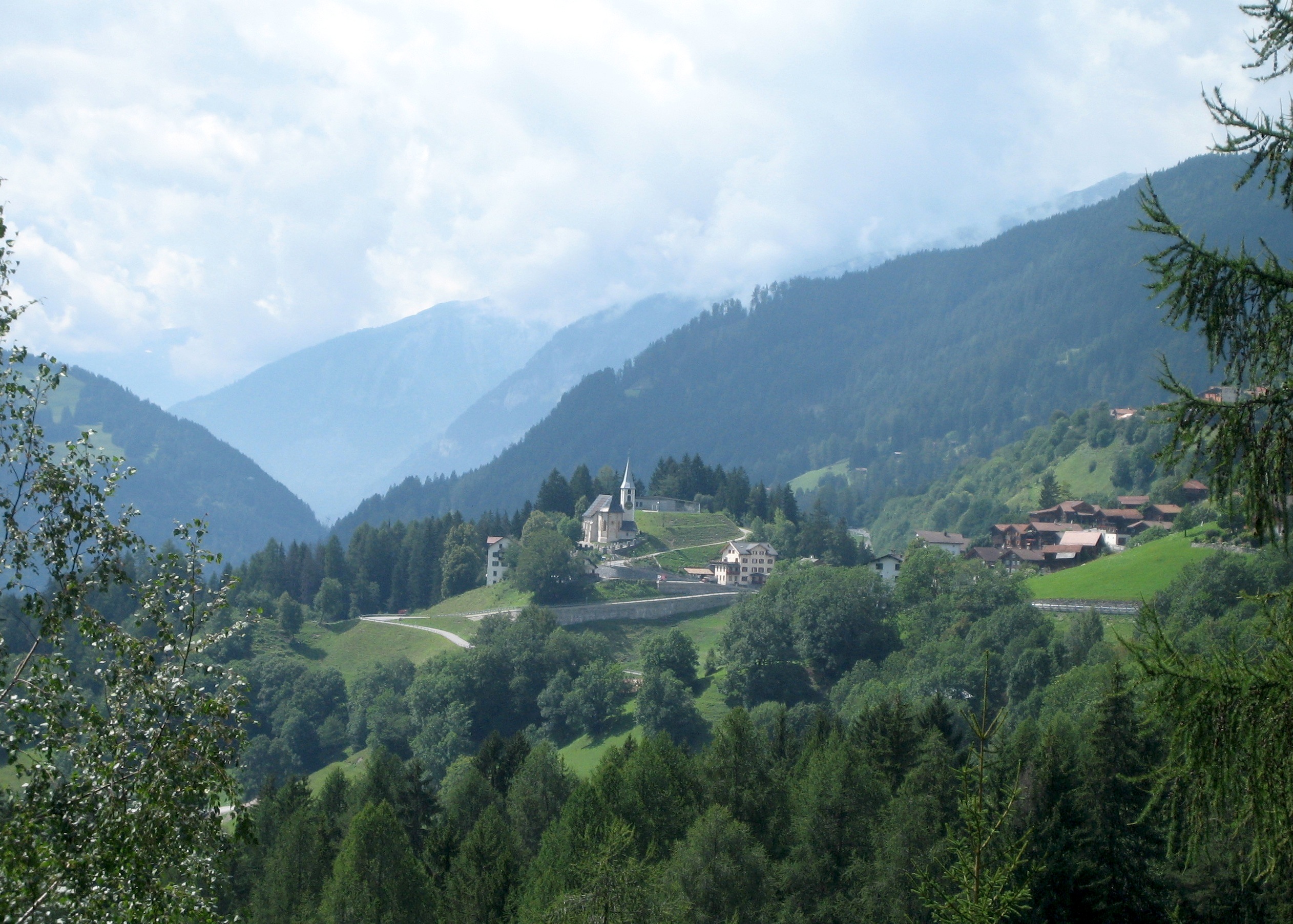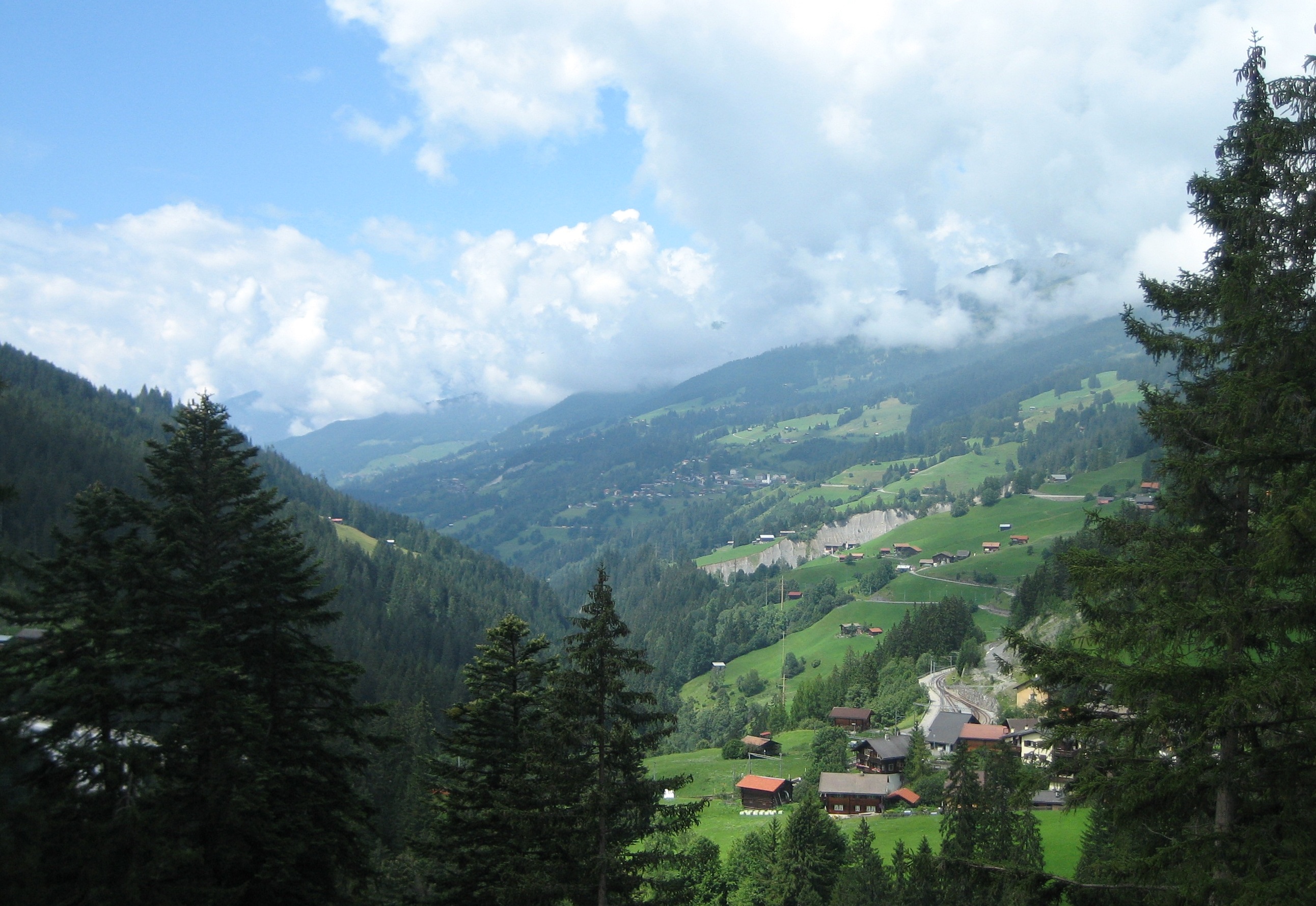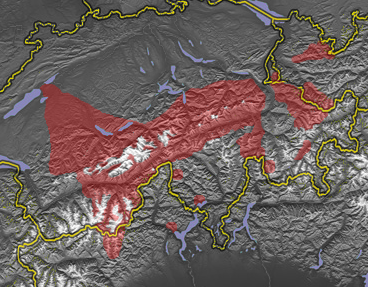|
Lüen
Lüen is a former municipality in the district of Plessur in the canton of Graubünden in Switzerland. On 1 January 2013 the former municipalities of Lüen, Calfreisen, Castiel, Langwies, Molinis, Peist and St. Peter-Pagig merged into the municipality of Arosa.Nomenklaturen – Amtliches Gemeindeverzeichnis der Schweiz accessed 9 February 2013 History Lüen is first mentioned in 1084 as ''Leune''.Geography Before the merger, Lüen had a total area of . Of this area, 37% is used for agricultural purposes, while 52.3% is forested. Of the rest of the land, 1.4% is settled (buildings or roads) and the remainder (9.2%) is non-productive (rivers, glaciers or mountai ...[...More Info...] [...Related Items...] OR: [Wikipedia] [Google] [Baidu] |
Castiel, Switzerland
Castiel () is a former municipality in the district of Plessur in the canton of Graubünden in Switzerland. On 1 January 2013 the former municipalities of Castiel, Calfreisen, Langwies, Lüen, Molinis, Peist and St. Peter-Pagig merged into the municipality of Arosa.Nomenklaturen – Amtliches Gemeindeverzeichnis der Schweiz accessed 9 February 2013 History Castiel is first mentioned in 1132 as ''Castellum''.Geography  Before the merger, Castiel had a total area of . Of this area, 43.1% is ...
Before the merger, Castiel had a total area of . Of this area, 43.1% is ...
[...More Info...] [...Related Items...] OR: [Wikipedia] [Google] [Baidu] |
Plessur (district)
Plessur District (german: Bezirk Plessur, rm, ) is a former administrative district in the canton of Graubünden, Switzerland. It had an area of and has a population of 40,707 in 2015. The former district is named after the river Plessur which crosses it. However, the region along the Plessur –and therefore the whole valley–is called Schanfigg. It was replaced with the Plessur Region on 1 January 2017 as part of a reorganization of the Canton. accessed 16 February 2017 Plessur District consisted of three '' ... [...More Info...] [...Related Items...] OR: [Wikipedia] [Google] [Baidu] |
Arosa
, neighboring_municipalities= Alvaneu, Davos, Langwies, Lantsch/Lenz, Molinis, Peist, Schmitten, Tschiertschen, Vaz/Obervaz, Wiesen , twintowns = Fukumitsu (Japan) Arosa is a town and a municipality in the Plessur Region in the canton of Graubünden in Switzerland. It is both a summer and a winter tourist resort. On 1 January 2013, the former municipalities of Calfreisen, Castiel, Langwies, Lüen, Molinis, Peist and St. Peter-Pagig merged into the municipality of Arosa.Nomenklaturen – Amtliches Gemeindeverzeichnis der Schweiz accessed 9 February 2013 At the end of 2013 the Arosa ski resort was linked with |
Langwies
Langwies is a former municipality in the district of Plessur in the canton of Graubünden in Switzerland. On 1 January 2013 the former municipalities of Langwies, Calfreisen, Castiel, Lüen, Molinis, Peist and St. Peter-Pagig merged into the municipality of Arosa.Nomenklaturen – Amtliches Gemeindeverzeichnis der Schweiz accessed 9 February 2013 History Langwies is first mentioned in 1384 as ''die lang Wise''.Geography  Before the merger, Langwies had a total area of .
Before the merger, Langwies had a total area of . [...More Info...] [...Related Items...] OR: [Wikipedia] [Google] [Baidu] |
Peist
Peist is a former municipality in the district of Plessur in the canton of Graubünden in Switzerland. On 1 January 2013 the former municipalities of Peist, Calfreisen, Castiel, Langwies, Lüen, Molinis and St. Peter-Pagig merged into the municipality of Arosa.Nomenklaturen – Amtliches Gemeindeverzeichnis der Schweiz accessed 9 February 2013 History Peist is first mentioned in 1084 as ''de Paiste''.Geography  Before the merger, Peist had a total area of . Of this area, 57% i ...
Before the merger, Peist had a total area of . Of this area, 57% i ...
[...More Info...] [...Related Items...] OR: [Wikipedia] [Google] [Baidu] |
Molinis
Molinis is a former municipality in the district of Plessur in the canton of Graubünden in Switzerland. On 1 January 2013 the former municipalities of Molinis, Calfreisen, Castiel, Langwies, Lüen, Peist and St. Peter-Pagig merged into the municipality of Arosa.Nomenklaturen – Amtliches Gemeindeverzeichnis der Schweiz accessed 9 February 2013 History Molinis is first mentioned in 1335 as ''Mulina''. Formerly, in Romansh, it was known as ''Molinas''.Geography Before the merger, Molinis had a total area of . Of this area, 26.7% is used for agricultural purposes, while ...[...More Info...] [...Related Items...] OR: [Wikipedia] [Google] [Baidu] |
Calfreisen
Calfreisen ( rm, ) is a former municipality in the district of Plessur in the canton of Graubünden in Switzerland. On 1 January 2013 the former municipalities of Calfreisen, Castiel, Langwies, Lüen, Molinis, Peist and St. Peter-Pagig merged into the municipality of Arosa.Nomenklaturen – Amtliches Gemeindeverzeichnis der Schweiz accessed 9 February 2013 History Calfreisen is first mentioned in 1156 as ''Caureisene''.Geography Before the merger, Calfreisen had a total area of . Of this area, 49.5% is used for agricultural purposes, while 30% is forested. Of the rest of the land, 1.7% is settled (buildings or roads) and the remainder (18.8%) is non-producti ...[...More Info...] [...Related Items...] OR: [Wikipedia] [Google] [Baidu] |
Praden
Praden (Romansh: ''Prada'') is a village in the municipality of Tschiertschen-Praden in the district of Plessur in the canton of Graubünden in Switzerland. The formerly independent municipality merged with Tschiertschen to form Tschiertschen-Praden on January 1, 2009.Amtliches Gemeindeverzeichnis der Schweiz published by the Swiss Federal Statistical Office accessed 23 September 2009 History Praden is first mentioned in 1157 as ''de Pradis''.Geography Praden has an area, , of . Of this area, 26.2% is used for agricultural purposes, while 67.9% is forest. Of the rest of the land, 1.1% is settled (buildings or roads) and the remainder (4.8%) is non-arable (rivers, glaciers or mountains).[...More Info...] [...Related Items...] OR: [Wikipedia] [Google] [Baidu] |
Tertiary Sector Of The Economy
The tertiary sector of the economy, generally known as the service sector, is the third of the three economic sectors in the three-sector model (also known as the economic cycle). The others are the primary sector (raw materials) and the secondary sector (manufacturing). The tertiary sector consists of the provision of Service (economics), services instead of Product (business), end products. Services (also known as "Intangible good, intangible goods") include attention, advice, access, experience and affective labor. The information economy, production of information has been long regarded as a service, but some economists now attribute it to a fourth sector, called the quaternary sector. The tertiary sector involves the provision of services to other businesses as well as to final consumers. Services may involve the transport, distribution (economics), distribution and sale of goods from a producer to a consumer, as may happen in wholesaler, wholesaling and retailer, retaili ... [...More Info...] [...Related Items...] OR: [Wikipedia] [Google] [Baidu] |
Christian Democratic People's Party Of Switzerland
The Christian Democratic People's Party of Switzerland (german: Christlichdemokratische Volkspartei der Schweiz, CVP), also called the Christian Democratic Party (french: Parti démocrate-chrétien, PDC), Democratic People's Party ( it, Partito Popolare Democratico, PPD) and Swiss Christian Democratic Party ( rm, ), PCD), was a Christian-democratic political party in Switzerland. On 1 January 2021, it merged with the Conservative Democratic Party of Switzerland (BDP/PBD) to form The Centre, which now operates at the federal level. The Christian Democratic People's Party will continue to exist at the cantonal level as individual local and regional parties determine their status. Its 28 parliamentary seats in the National Council and 13 parliamentary seats in the Council of States were transferred to the new party, as was its sole executive seat on the Federal Council, held by Viola Amherd. The party was founded as the Catholic Conservative Party in 1912. It peaked in the 1950 ... [...More Info...] [...Related Items...] OR: [Wikipedia] [Google] [Baidu] |
Walser
The Walser people are the speakers of the Walser German dialects, a variety of Highest Alemannic. They inhabit the region of the Alps of Switzerland and Liechtenstein, as well as the fringes of Italy and Austria. The Walser people are named after the Wallis (Valais), the uppermost Rhône valley, where they settled from roughly the 10th century in the late phase of the migration of the Alamanni, crossing from the Bernese Oberland; because of linguistic differences among the Walser dialects, it is supposed that there were two independent immigration routes. From the upper Wallis, they began to spread south, west and east between the 12th and 13th centuries, in the so-called Walser migrations (''Walserwanderungen''). The causes of these further population movements, the last wave of settlement in the higher valleys of the Alps, are not entirely clear. Some think that the large ''Walser'' migrations took place because of conflicts with the valley's feudal lords. Other theories con ... [...More Info...] [...Related Items...] OR: [Wikipedia] [Google] [Baidu] |
Romanesque Architecture
Romanesque architecture is an architectural style of medieval Europe characterized by semi-circular arches. There is no consensus for the beginning date of the Romanesque style, with proposals ranging from the 6th to the 11th century, this later date being the most commonly held. In the 12th century it developed into the Gothic style, marked by pointed arches. Examples of Romanesque architecture can be found across the continent, making it the first pan-European architectural style since Imperial Roman architecture. The Romanesque style in England and Sicily is traditionally referred to as Norman architecture. Combining features of ancient Roman and Byzantine buildings and other local traditions, Romanesque architecture is known by its massive quality, thick walls, round arches, sturdy pillars, barrel vaults, large towers and decorative arcading. Each building has clearly defined forms, frequently of very regular, symmetrical plan; the overall appearance is one of simplic ... [...More Info...] [...Related Items...] OR: [Wikipedia] [Google] [Baidu] |



